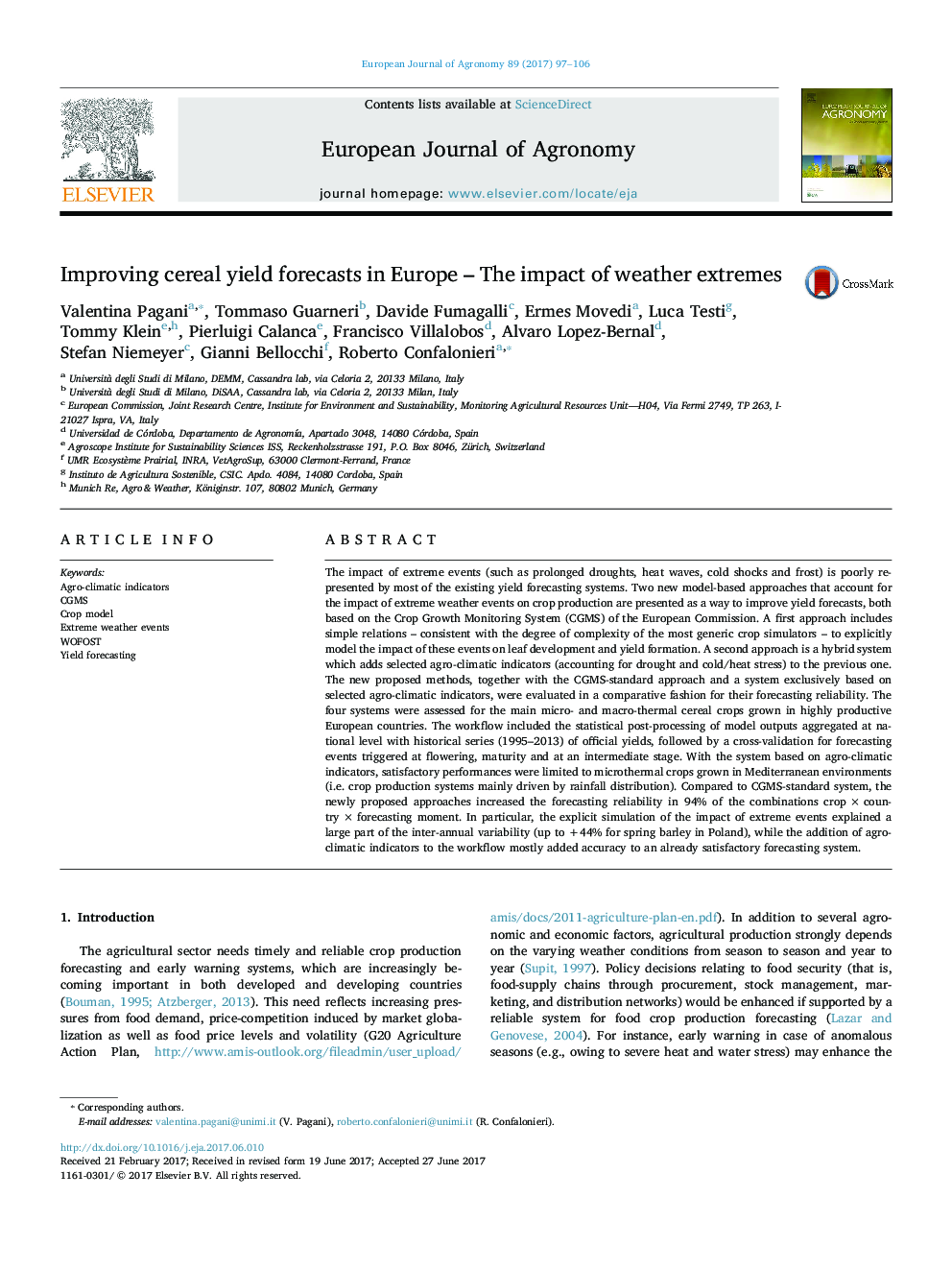| کد مقاله | کد نشریه | سال انتشار | مقاله انگلیسی | نسخه تمام متن |
|---|---|---|---|---|
| 5761224 | 1624435 | 2017 | 10 صفحه PDF | دانلود رایگان |
عنوان انگلیسی مقاله ISI
Improving cereal yield forecasts in Europe - The impact of weather extremes
ترجمه فارسی عنوان
بهبود پیش بینی عملکرد غلات در اروپا - تاثیر شدید شرایط آب و هوایی
دانلود مقاله + سفارش ترجمه
دانلود مقاله ISI انگلیسی
رایگان برای ایرانیان
کلمات کلیدی
موضوعات مرتبط
علوم زیستی و بیوفناوری
علوم کشاورزی و بیولوژیک
علوم زراعت و اصلاح نباتات
چکیده انگلیسی
The impact of extreme events (such as prolonged droughts, heat waves, cold shocks and frost) is poorly represented by most of the existing yield forecasting systems. Two new model-based approaches that account for the impact of extreme weather events on crop production are presented as a way to improve yield forecasts, both based on the Crop Growth Monitoring System (CGMS) of the European Commission. A first approach includes simple relations - consistent with the degree of complexity of the most generic crop simulators - to explicitly model the impact of these events on leaf development and yield formation. A second approach is a hybrid system which adds selected agro-climatic indicators (accounting for drought and cold/heat stress) to the previous one. The new proposed methods, together with the CGMS-standard approach and a system exclusively based on selected agro-climatic indicators, were evaluated in a comparative fashion for their forecasting reliability. The four systems were assessed for the main micro- and macro-thermal cereal crops grown in highly productive European countries. The workflow included the statistical post-processing of model outputs aggregated at national level with historical series (1995-2013) of official yields, followed by a cross-validation for forecasting events triggered at flowering, maturity and at an intermediate stage. With the system based on agro-climatic indicators, satisfactory performances were limited to microthermal crops grown in Mediterranean environments (i.e. crop production systems mainly driven by rainfall distribution). Compared to CGMS-standard system, the newly proposed approaches increased the forecasting reliability in 94% of the combinations crop Ã country Ã forecasting moment. In particular, the explicit simulation of the impact of extreme events explained a large part of the inter-annual variability (up to +44% for spring barley in Poland), while the addition of agro-climatic indicators to the workflow mostly added accuracy to an already satisfactory forecasting system.
ناشر
Database: Elsevier - ScienceDirect (ساینس دایرکت)
Journal: European Journal of Agronomy - Volume 89, September 2017, Pages 97-106
Journal: European Journal of Agronomy - Volume 89, September 2017, Pages 97-106
نویسندگان
Valentina Pagani, Tommaso Guarneri, Davide Fumagalli, Ermes Movedi, Luca Testi, Tommy Klein, Pierluigi Calanca, Francisco Villalobos, Alvaro Lopez-Bernal, Stefan Niemeyer, Gianni Bellocchi, Roberto Confalonieri,
